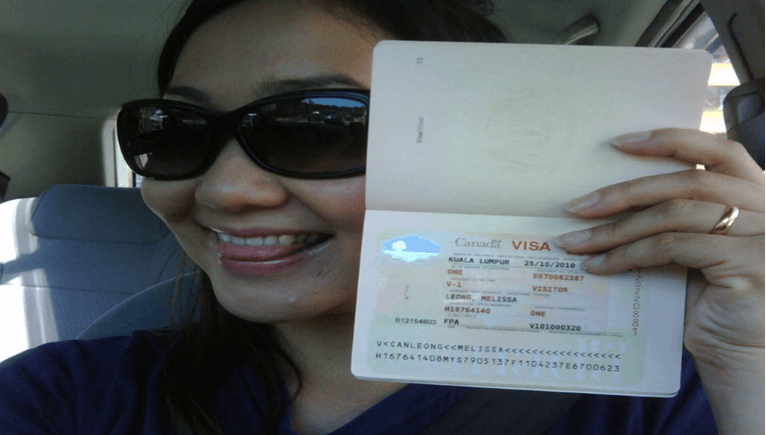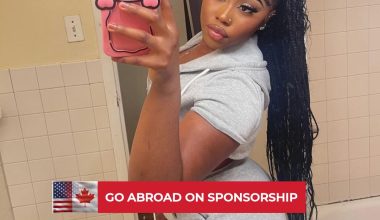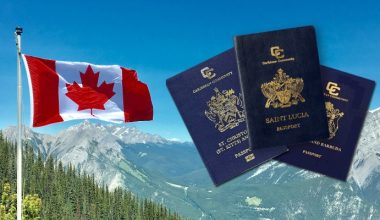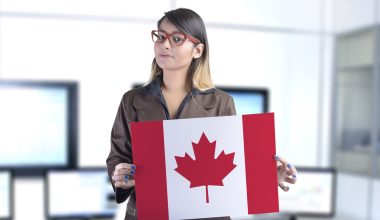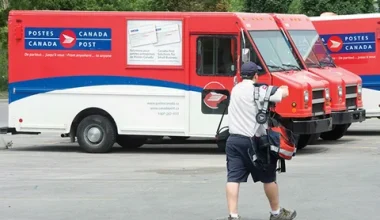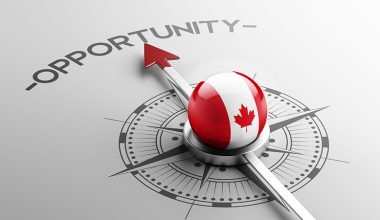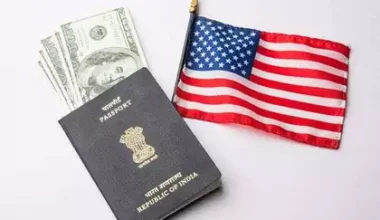Every year, millions of people travel to the United States for a variety of reasons such as tourism, business, medical treatment, or visiting family and friends.
If you are a Canadian resident or a foreign national living in Canada planning a short-term visit to the U.S., you’ll likely need a U.S. visitor visa (B-1/B-2), unless you’re a Canadian citizen.
Navigating the U.S. visitor visa application process can be intimidating, especially for first-time applicants. This guide provides a step-by-step walkthrough, from understanding the visa types and eligibility criteria to booking your biometric appointment and submitting a successful application.
Apply Also: Dairy Farm Worker needed with Visa sponsorship in Canada (Salary $18/Hr)
What is a U.S. Visitor Visa?
The U.S. visitor visa (B-1/B-2) is a non-immigrant visa for short stays. It allows entry into the U.S. for:
- B-1 Visa (Business): For business activities like meetings, attending conferences, or negotiating contracts.
- B-2 Visa (Tourism): For tourism, visiting family/friends, medical treatment, or participating in social events.
Who Needs a U.S. Visitor Visa?
Even if you reside in Canada, unless you are a Canadian citizen, you will need a U.S. visitor visa. This includes foreign nationals living in Canada, such as permanent residents, students, and temporary workers.
While the Canadian visitor visa allows temporary stays, it does not extend your time in the U.S. Some temporary residents in Canada extend their stay by exiting Canada for 24 hours and re-entering, though this is not a long-term solution.
Visa Conditions and Eligibility
Visa Conditions
- Length of Stay: The duration of your stay in the U.S. is determined by the Customs and Border Protection (CBP) officer at the port of entry, with stays typically lasting up to six months. This duration is stamped in your passport or issued on an I-94 form.
- Permitted Activities:
- B-1 Visa: Attend business meetings, conferences, and negotiate contracts.
- B-2 Visa: Sightseeing, visiting family, participating in social events, and receiving medical treatment.
- Prohibited Activities:
- Employment: You cannot work or receive compensation from a U.S. source.
- Study: You cannot enroll in formal studies.
- Permanent Residency: You cannot apply for permanent residency while on a visitor visa.
- Visa Validity: A U.S. visitor visa is generally valid for up to 10 years, allowing multiple entries. However, the length of stay is determined by the CBP officer upon each entry.
Apply Also: 10 Canada Farming Jobs with Visa Sponsorship
Eligibility Criteria
- Purpose of Visit: Your trip must be for business, tourism, or medical treatment and must be temporary.
- Strong Ties to Canada: You need to prove strong connections to Canada, such as employment, property, or family, showing your intent to return.
- Financial Stability: You must demonstrate sufficient funds to cover your expenses during your stay in the U.S.
- No Immigrant Intent: You must prove that you have no intention of immigrating to the U.S. permanently.
Required Documentation
- Valid Passport: Must be valid for at least six months beyond your intended stay.
- DS-160 Form: A completed Non-immigrant Visa Electronic Application.
- Photograph: Recent passport-sized photo that meets U.S. visa requirements.
- Proof of Ties to Canada: Employment verification, proof of property ownership, or family relationships.
- Financial Evidence: Bank statements or pay stubs showing your financial capacity.
- Travel Itinerary: Flight tickets, hotel reservations, and planned activities.
Apply Also: Canadian Citizenship Eligibility and Application Process
Special Considerations for Certain Applicants
- Students and Workers in Canada: You may need to provide additional documentation like a study or work permit along with proof of enrollment or employment.
- Dual Nationals: If you hold dual citizenship, apply using the passport you intend to travel with.
Step-by-Step Application Process
Step 1: Complete the DS-160 Form
- Visit the U.S. Department of State’s website and fill out the DS-160 form with personal information and travel details. Print the confirmation page with the barcode for your records.
Step 2: Pay the Visa Application Fee
- Pay the non-refundable fee (typically $160 USD) via the U.S. Visa Information and Appointment Services website. Save the receipt.
Step 3: Schedule Your Visa Interview
- After payment, schedule your visa interview at a U.S. Embassy or Consulate in Canada. Print the confirmation page.
Step 4: Gather Required Documents
- Prepare your DS-160 confirmation, fee receipt, appointment confirmation, passport, passport photo, and supporting documents.
Step 5: Attend Your Visa Interview
- Arrive early, dress professionally, and answer questions about your trip. Present your supporting documents confidently.
Step 6: Receive Your Visa
- If approved, your visa will be stamped in your passport and returned via mail. Check the visa details for accuracy.
Biometric Appointment
In some cases, you may be required to provide biometric information (fingerprints and a photograph). This will be done at a Visa Application Center (VAC). After scheduling, bring your appointment confirmation, passport, and DS-160 form to your appointment.
Tips for a Successful Visa Application
- Start Early: Begin your application well in advance to avoid delays.
- Be Thorough and Accurate: Ensure all your information is consistent and complete.
- Prove Strong Ties to Canada: Provide clear evidence of your intent to return after your visit.
- Prepare for the Interview: Practice common interview questions.
- Organize Your Documents: Keep everything organized and accessible.
- Stay Calm and Confident: A calm demeanor can positively influence the outcome.
- Follow Up if Necessary: If additional documentation is needed, respond promptly.
Conclusion
The U.S. visitor visa process from Canada requires careful planning, but with proper preparation, it can be straightforward.
By following this guide and ensuring you meet all requirements, you can increase your chances of a successful visa application and enjoy your trip to the U.S., whether for business, tourism, or medical reasons.

